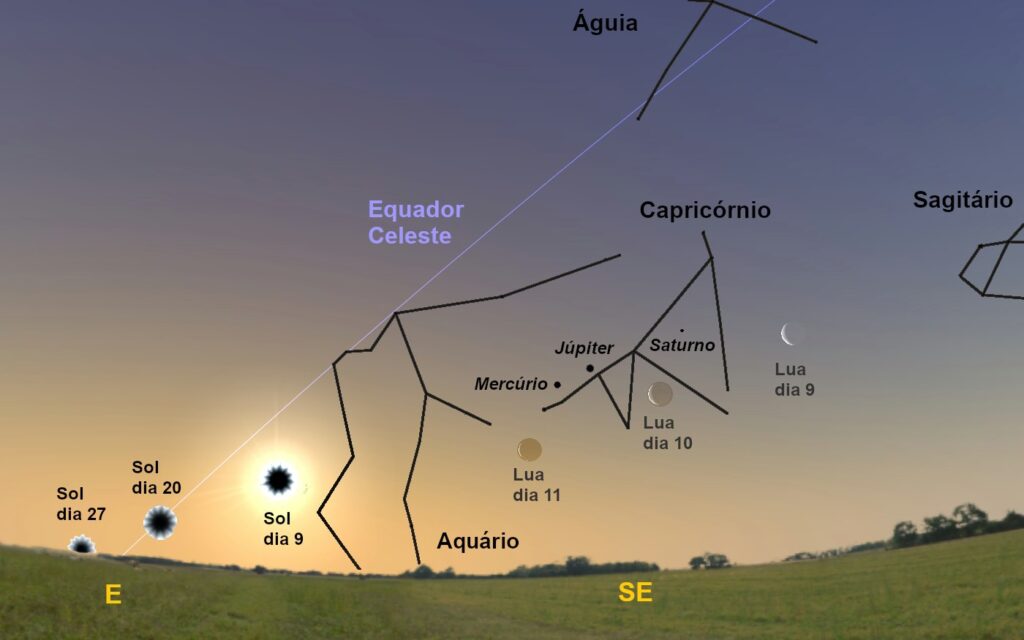This will be a month when anyone who wants to observe the main planets in the solar system will have to get up early or late. In fact, right at the end of the morning of the 5th, we will see Jupiter being born alongside Mercury.
The following night, the waning quarter will take place, but we will only see the moon rise in the following morning. In this same dawn on the 6th, the planet Mercury reaches its greatest elongation (removal) to the west relative to the Sun.
Between the morning of the 9th, 10th and 11th, we will see how the Moon passes alongside the planets Saturn, Jupiter and Mercury.
On the 13th, the New Moon will take place, thus it is not possible to observe it. Venus and Neptune will also not be visible this month, as they are also in a very close solar direction.
In the early evening of the 19th, the Moon will be seen between the planet Mars and Aldebarã, a reddish giant star that we associate with one of the eyes of the constellation Taurus.

Between sunset 16 and sunrise the next day, twelve hours will pass. This is not due to the occurrence of an equinox on this date, but to the atmospheric refraction that makes us see the Sun always slightly above its real position, thus shortening the length of the nights.
The equinox, time of the year when the sun is just above the equator, illuminating the terrestrial northern and southern hemispheres in the same way, will only take place at 5 hours and 37 minutes (continental time) on the 20th.
In our country, we call this ephemeris the Spring Equinox, because, from this moment on, our hemisphere is turned towards the Sun, and so this star is seen above the celestial equator (projection of our equator on the firmament), marking the beginning of spring.
As winter gives way to spring, the sun rises earlier and earlier. In order to take advantage of an extra hour of sun exposure, some countries located at mid-latitudes tend to advance their watches in spring.
In Portugal, this change is made at 1 am (continental time) on the last Sunday of March. Thus, this year, we will advance our watches one hour on the 28th, the day that coincides with the last significant event of this month : the Full Moon.
Note that close to the equator there are no major fluctuations in the length of nights. On the other hand, at high latitudes, the duration of the days and nights is so great that it makes no difference to change the time.
Consequently countries located in these regions do not feel the benefits of the change of time and therefore either never adopted this custom or seek to abolish it.
Good remarks!
Author Fernando JG Pinheiro is a researcher at the Department of Physics at the Faculty of Science and Technology at the University of Coimbra and at CITEUC – Center for Research on Earth and Space at the University of Coimbra.
His fields of expertise include Astrophysics, Geomagnetism and Space Meteorology.
In addition to his work as a researcher, he has already worked on the governing bodies of the Portuguese Society of Astronomy, and coordinated the Solar System Science group at CITEUC.
Fernando Pinheiro is also a regular contributor to scientific dissemination activities.
Help us to do the Sul Informação!
Contribute your donation so that we can continue to make your journal!
Click here to support us (Paypal)
Or use our IBAN PT50 0018 0003 38929600020 44




















Comments